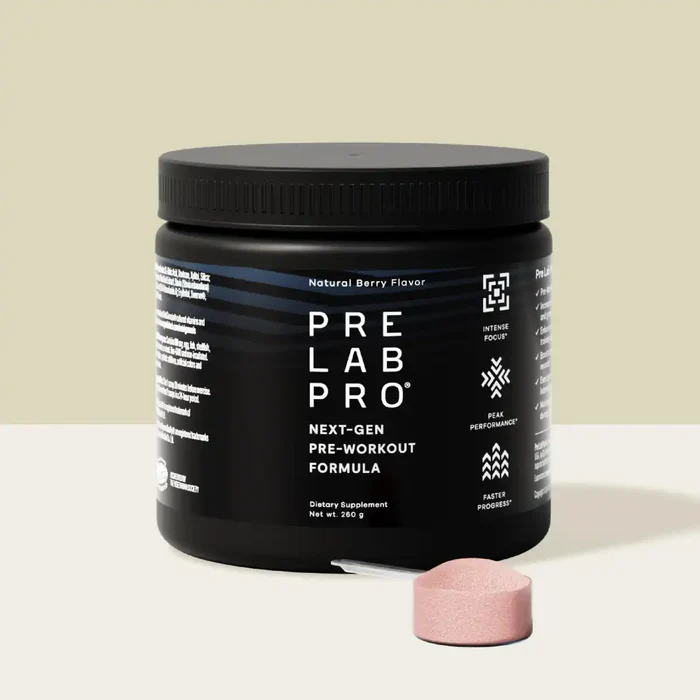Key Takeaways
- Carbohydrates are stored as glycogen in muscle and liver and act as the primary fuel for moderate to high-intensity training.
- Low muscle glycogen can limit power, endurance, and training quality while increasing perceived effort and risk of overreaching.
- Athletes benefit from matching carb intake to training load to keep glycogen topped up, support recovery, and protect lean mass.
- Combining smart carbohydrate strategies with a high-quality pre-workout can help you train harder and adapt better over time.

Find out why loading up on carbs is the smart move in the gym, on the track and in the pool.
Good nutrition is essential for athletic performance.
Without the right diet to fuel your workouts you will never hit the bar-bending heights you want to.
And carbohydrates are key.
Carbs provide an important and accessible form of energy that gets stored in muscle tissues as glycogen.
It’s essential for athletes to have high muscle glycogen, especially those that rely on glycolysis for energy production. That includes everyone from weightlifters and bodybuilders to marathon runners and swimmers.
In this article you’ll find out how ditching the low carb approach and saturating your muscles with glycogen will power your workouts into new territory.
Key points:
- Glycogen is a form of carbohydrate stored in the muscle and liver.
- During moderate to high intensity exercise, glycogen provides a major source of energy.
- A high-carb diet is the best way to ensure your glycogen stores are topped up.
To get started, we’re going to slip on our white lab coat and cover some biology…
Muscle glycogen and energy production
Don’t worry – it’s nothing too complex. Just some fundamentals to help understand the application of carb intake and glycogen storage in muscles.
Not quite a science 101. But it is a good idea for athletes to have a grounding in the mechanics of diet and exercise, so they can be more evidence-based in their strategy.
When you eat carbohydrates, your body stores them as glycogen in your muscles and liver. Around 80% is stored in muscle,15% in the liver and the rest in your blood.
Depending on your body size, you can store around 400 g of carbs in total. That’s around 2000 kcal of energy, which will last around 24 hours if you’re inactive – or around 60-90 minutes during high-intensity workouts.
Banking on glycogen
If we say glycogen is like a bank card where you store your money, glucose is the loose change in your pocket. In other words, your muscles store glycogen to be used at a later date.
Glucose is the readily accessible form of carbs in your blood, without needing to be broken down. Once that glucose molecule gets used, your body will tap into more glycogen reserves in order to sustain exercise intensity.
Although it’s an important fuel source, your body has a limited storage capacity for glycogen.
We eat food for energy. There’s a bit more to it than that, of course. But the pure physics is that we need those macronutrients to sustain vital functions and support the energy burned off during physical activity.
Each macronutrient has its own specific set of functions. Protein supports growth and repair as well as peptide hormone and enzyme production. Fats help with thermoregulation and steroid hormone production.
Both of these macros provide energy, and they’re both essential. That is you absolutely have to have them in your diet for health and performance.
Carbohydrates are responsible for regulating blood glucose and providing energy. Interestingly, carbs aren’t essential – and you don’t have to include them in your diet.
But here’s the important part – when carb intake is low, your body borrows protein and converts it to glucose via a process called gluconeogenesis.
And that’s bad. Because it means you’re essentially tapping into your lean muscle gains for energy.

Why glycogen is important during exercise
Without going into the deep biochemistry of energy biogenesis, glycogen metabolism is used as the primary energy source during moderate to intense exercise.
It allows you to produce energy quickly, to keep you going during those intense workouts. The rate of energy you can supply to the cells (as adenosine triphosphate or ATP) depends on the intensity you can exercise at. So the faster you can make ATP, the longer and harder you can go in the gym.
Fats actually provide more ATP than glycogen can. A lot more. But the rate at which it supplies it is slow. It requires many more metabolic processes - so when you need to energy quickly, it doesn’t make sense to rely solely on fatty acids. This is where glycogen takes the lead.
Go harder for longer
At exercise intensities above 50 or 60% of VO2max, ATP demands increase significantly. Fat cannot entirely meet the rate of ATP synthesis, so glycogen breakdown and glucose oxidation increase.
At rest, your muscles only utilize about 20% peripheral glucose. Whereas at higher intensity exercise that number goes up exponentially to around 85%.
The bottom line here is, having more glycogen available means you can train at a higher intensity for longer. Low glycogen means early fatigue and exhaustion.
Higher glycogen levels mean faster and longer ATP synthesis. The impact of this is you can exercise at a higher intensity for longer periods of time.
How much carbohydrate do you need for optimal performance?
When it comes to recommendations on carbohydrate intakes, there are a number of considerations to take into account. These include the sport and its underlying bioenergetics, the rate of glycogen depletion and the overall macro needs of the athlete.
The International Society of Sports Nutrition 1 currently suggest that if you’re just taking part in general fitness, a standard 3-5 grams of carb per kilogram of body weight each day is fine. That’s around 45-55% of total daily calorie intake.
However, more active athletes—such as those taking part in two to three hours of intense exercise each day –may need more like 5-8 g per kilogram of body weight in order to fully maintain liver and muscle glycogen.
And finally, those putting their body through a grueling three to four hours per day, five or six days per week will need an eye-watering 8-10 g per kilogram of body weight to support glycogen re-synthesis.
Additional recommendations suggest that during competition, athletes may want to shoot for a carb intake of 30-60 grams per hour. And as much as 100 g per hours for ultra-endurance events lasting four or more hours.
The Importance of Muscle Glycogen Levels for Athletes
Higher muscle glycogen content allows athletes to perform at higher intensities for longer periods without fatigue or exhaustion.
Research has shown that higher glycogen levels enhance performance in sports such as soccer, rugby, basketball, boxing and other high-intensity, intermittent sports that rely on glycogen as the primary fuel source.
A study published in Sports Medicine 2 suggested that increasing muscle glycogen stores before taking part in sport helps delay the onset of fatigue during prolonged, intermittent variable-speed running. Not only that, higher carb intakes during exercise—typically ingested via carbohydrate-based supplements—is also associated with improved performance.
Several studies have found that endurance athletes perform significantly better with higher glycogen levels. A study by Coyle et al. found that carbohydrate feeding before prolonged endurance exercise helped to delay fatigue at higher intensities 3 by slowing down glycogen depletion.
Lastly, bodybuilders also benefit from higher glycogen levels. Not only because anaerobic glycolysis is a primary fuel system during weightlifting, but because muscles full of glycogen provide an insane muscle pump. Which is one of the reasons that bodybuilders will ‘carb up’ prior to a show.

Higher glycogen levels support optimal recovery in athletes
It’s important to top up glycogen stores after intense exercise. Not only does it support growth and recovery, it also prepares the body for the following workout.
Higher carbohydrate intakes have been shown to support optimal recovery 4 after training. A study by Burke and colleagues suggested regular carb intake and snacking could help to offset excessive fatigue.
It also suggested that athletes should begin carbohydrate intake as soon as practical after the first workout to maximize the effective recovery time between sessions.
Other studies have shown that lower carb intakes could be a risk factor for overtraining 5.
There are several recovery strategies available to athletes. But consuming up to 8 g of carbohydrate per kilogram of body weight – or at least 1.2 g of carbohydrate per kilogram per hour in the first four hours of recovery – takes precedence 6 over other strategies.
Learn more about recovery strategies for athletes
According to a review published in the Journal of Sports Science and Medicine 6, glycogen synthesis is a relatively slow process. Therefore, muscle glycogen replenishment requires priority post-workout, especially when time is limited between training sessions or competition.
To maximize the rate of muscle glycogen synthesis it’s important to consume a high-quality carbohydrate source immediately after exercise and to continue to supplement at frequent intervals.
There are high-quality carb supplements available to support this, or you can opt for natural strategies such as consuming whole food sources like sweet potatoes, oats, or fruits.
Combining these with a moderate amount of protein can further enhance glycogen replenishment and recovery.
Supplements to delay glycogen depletion
While post-workout recovery and replenishment is essential, setting yourself up for success starts before you even begin your session.
The right pre-workout can help optimize energy use during training and delay glycogen depletion. Allowing you to perform at your peak for longer.
Pre Lab Pro® contains a blend of ingredients designed to boost endurance, strength, and focus.
Beetroot Powder: Beetroot powder helps boost nitric oxide (NOx) levels, which improves blood flow and oxygen delivery to muscles during exercise.
Although this doesn’t directly replenish glycogen, better oxygenation allows muscles to use energy more efficiently and delay glycogen depletion, thus helping you maximize endurance before needing to rely heavily on stored glycogen.
L-Citrulline: The Setria® blend (L-Citrulline + Glutathione) improves circulation and supports muscle recovery, which is closely related to muscle performance and glycogen replenishment. By enhancing nutrient delivery, Pre Lab Pro® helps muscles work longer before tapping fully into glycogen reserves.
Natural Caffeine: Caffeine is known to enhance endurance by increasing fat oxidation, which spares glycogen for later stages of a workout. This helps maintain energy levels over longer periods of intense exercise.

Pre Lab Pro® works in harmony with your body's energy systems, ensuring you’re not only maximizing your glycogen replenishment post-workout but also strategically preserving it during your workout.
Takeaway…
Levels of muscle glycogen are crucial for your athletic performance. During both short-term and prolonged high-intensity intermittent exercise.
To fuel the bar-bending, boundary-pushing training results you are looking for—you need to build up adequate glycogen levels.
Not just prior and during your sessions, but post-exercise to replenish depleted stores too.
Want to know how to spot the signs and symptoms of glycogen depletion? Check out a dedicated article here…
References
- https://jissn.biomedcentral.com/articles/10.1186/s12970-017-0177-8
- https://www.ncbi.nlm.nih.gov/pmc/articles/PMC4672015/
- https://www.ncbi.nlm.nih.gov/pubmed/6390613
- https://www.ncbi.nlm.nih.gov/pubmed/14971430
- https://www.ncbi.nlm.nih.gov/pubmed/23247672
- https://jissn.biomedcentral.com/articles/10.1186/s12970-018-0242-y















